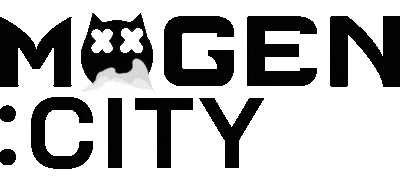Introduction: When 15 Seconds Became a Global Stage
For decades, the music industry revolved around radio play, label deals, and carefully choreographed artist rollouts. Then TikTok came along, and suddenly, a 15-second dance loop could launch a song from obscurity to chart-topping glory — all without a label’s blessing.
Gen Z has hijacked the traditional music pipeline, using TikTok’s powerful algorithm to elevate bedroom producers, forgotten throwbacks, and hyper-specific subgenres into mainstream culture. What started as a lip-syncing app has become the most influential music discovery engine on the planet. In this article, we explore how Gen Z — armed with their phones, memes, and an insatiable appetite for novelty — is rewriting the rules of the global music industry in real time.
1. TikTok as a Hitmaker: The New A&R
In the old days, Artist and Repertoire (A&R) reps scouted musicians in clubs or sifted through demos. Now, they scroll TikTok.
TikTok’s For You Page (FYP) acts as an algorithmic tastemaker, analyzing user behavior to serve up songs that could go viral at any moment. A snippet, dance trend, or relatable skit can skyrocket a song into the Billboard Hot 100.
Case Studies:
- Lil Nas X – “Old Town Road”: Started as a meme, exploded via TikTok, became the longest-running No.1 in Billboard history.
- Doja Cat – “Say So”: A fan-made dance blew up the track before radio caught on.
- PinkPantheress: Uploaded lo-fi snippets that went viral before she had a full song out.
Gen Z isn’t waiting for permission — they’re creating the narrative and momentum themselves.
2. The Rise of the Algorithm Artist
TikTok is fostering a new type of musician — one who understands virality, not just musicality. These artists:
- Compose songs with hooks timed to the 10-15 second sweet spot.
- Layer audio with relatable or memetic content (lyrics about heartbreak, glow-ups, etc.).
- Design releases with “TikTok first” thinking, often testing multiple clips to see which gains traction.
It’s not about the album anymore. It’s about the snippet, and then the rest follows.
3. Globalization Through Trends
One of TikTok’s most revolutionary effects is how it breaks language and cultural barriers.
| Song | Artist | Origin | TikTok Impact |
|---|---|---|---|
| “Love Nwantiti” | CKay | Nigeria | Became one of TikTok’s most used sounds, topping charts in Europe and India. |
| “Makeba” | Jain | France | A 2015 track revived and used in over 9 million TikTok videos. |
| “Cupid” | Fifty Fifty | South Korea | K-pop song that hit Billboard’s Top 20 due to a viral TikTok trend. |
Gen Z users don’t care about borders — they care about vibe, mood, and virality. A Russian remix, Brazilian funk beat, or Indonesian ballad can suddenly become the backdrop to millions of videos.
4. The Visual-Lyrical Loop: How TikTok Redefines Sound
Music on TikTok isn’t just heard — it’s seen.
- Lyrics become meme formats (“I’m not the villain, I’m the victim” over glow-up edits).
- Sounds become punchlines (SZA’s “Kill Bill” over anime fight scenes).
- Dance trends choreograph song structure.
This visual layer adds interpretive meaning to songs, giving them multiple lives and emotional layers. In many ways, TikTok functions like a visual annotation engine for music.
5. Discovery to Distribution: From TikTok to Spotify and Beyond
Songs that trend on TikTok often chart on Spotify’s Viral 50, climb the Apple Music charts, and enter Billboard Hot 100.
- TikTok = Discovery
- Spotify = Validation
- Radio/TV = Amplification
Labels now monitor TikTok metrics like:
- Number of videos created using a sound
- Engagement per video
- International usage and trend spikes
These analytics shape signing decisions, release dates, and even remix strategies.
6. The Business of Viral Sounds
TikTok trends also fuel new business models:
- Micro-sync deals: Labels pay influencers to use a sound in their videos.
- Fan-powered promotion: Indie artists encourage fans to use tracks in “open verse” challenges.
- Catalog mining: Labels re-release old songs that are trending (e.g., Fleetwood Mac’s “Dreams”).
There’s also a new class of professionals — TikTok music consultants — who strategize how to make songs go viral.
7. The Dark Side: Burnout, Pressure, and Algorithmic Dependency
With opportunity comes stress. Artists often feel pressured to:
- Constantly create new content.
- Manufacture virality.
- Chase trends rather than authenticity.
Many musicians report burnout from constantly feeding the TikTok machine. Some even abandon platforms after breakout success due to anxiety or creative fatigue.
The danger? Algorithmic dependency — where artists feel irrelevant if their last song didn’t trend.
8. Fan Participation as Co-Creation
Gen Z fans aren’t just consumers — they’re co-creators:
- They remix sounds, mashup beats, add harmonies, or rap over instrumentals.
- They build lore around songs, turning a lyric into a viral joke or inside reference.
- They even influence official releases (e.g., sped-up versions becoming the main release on Spotify).
Music becomes modular and participatory, a sharp contrast from the passive listener model of past decades.
9. TikTok Music Charts and the Rise of ‘Sound-First’ Listening
TikTok has launched its own music distribution service and charts, aiming to vertically integrate the artist-to-audience journey.
Meanwhile, users increasingly seek music they first heard on TikTok, not from playlists or albums. This “sound-first” behavior rewires how we understand music discovery:
- Recognition through memes
- Engagement through edits
- Emotional attachment through trend narratives
It’s less about who made the song, and more about how it was used.
10. What’s Next: AI, Web3, and Decentralized Music Scenes
Looking ahead, the TikTok-led revolution may be just the beginning:
- AI-generated music snippets are already being tested for TikTok sounds.
- Web3 music platforms (e.g., Sound.xyz) allow fans to own shares in songs that go viral.
- Virtual artists like FN Meka, or avatar influencers, may become the next big stars.
We may also see more decentralized fan-led record labels, where curators and communities sign TikTok-discovered talent using DAOs.
Conclusion: The Algorithm is the A&R, and Gen Z Runs the Show
In the new music economy, attention is the currency, and virality is the metric of success. TikTok has not only democratized discovery — it’s given Gen Z unprecedented creative power.
No longer do artists need big-budget music videos or major label backing. All they need is a killer 15 seconds, a phone, and a crowd willing to vibe. With TikTok, music is faster, weirder, and more global than ever — and it’s only getting started.
In this reality, the algorithm isn’t just part of the music industry — it is the industry. And Gen Z? They’re remixing it daily.
TikTok’s Global Hit Machine: Gen Z and Algorithms Are Rewriting the Music Industry
The content, TikTok’s Global Hit Machine: Gen Z and Algorithms Are Rewriting the Music Industry, published on Mugen:City is for informational and entertainment purposes only.
We do not offer financial advice, investment recommendations, or trading strategies.
Cryptocurrencies, NFTs, and related assets are highly volatile and risky — always DYOR (do your own research) and consult with a professional advisor before making any financial decisions.
Mugen:City, its writers, and affiliates are not responsible for any losses, damages, or financial consequences resulting from your actions.
You are fully responsible for your own moves in the degen world. Stay sharp, stay rebellious.





